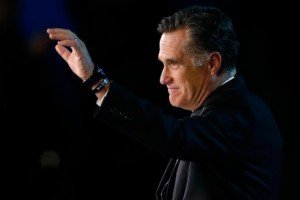The brand-breaking challenges JC Penney has had are in no way inevitable, Forbes magazine says, in this discussion of predictive analytics. By harnessing the power of mathematics, we’re told, retailers can significantly reduce the risk of going catastrophically off-brand, alienating your best customers, and losing market share. Does Forbes have it right?
Yes and no.
Yes, because statistical analysis of previous customer behavior provides retailers with tremendously valuable information. Objectively examining what has happened in your stores over the course of time can be a very revealing exercise. Retailers who engage in this type of analysis often discover things about their operations that they never otherwise suspected.
In the Forbes article, for example, we see how retailer Perry Ellis discovered that when their associates actively engaged with customers, such as assisting them in the fitting room, those customers would spend 50% more on Perry Ellis merchandise than customers who were left alone to shop.
This type of insight is valuable. But it is not sufficient.
Going Deeper: The Secret to Retail Growth
It’s really good to know what your customers have done. It’s even better to know why they’ve done it. Understanding the mathematics of customer behavior is a great first step, but to achieve sustainable, meaningful growth, retailers need to understand their customers’ motivations.
This is where things get complicated. 90% of customer behavior is unconscious. This means that customers don’t fully know — and they certainly can’t articulate — what leads them to embrace one retailer and eschew another. All of the stuff that determines these decisions takes place ‘off radar’, in the customer’s unconscious mind.
The unconscious mind is a complex and nuanced territory. We all have an unconscious mind. It’s where we store the millions upon millions of messages we’re given by our culture, education, and environment about the type of person we’re ‘supposed’ to be. Every image we see, every story we hear, every experience we go through leaves its mark on our unconscious mind. Together, these forces combine to form our self image.
Customers make purchasing decisions that reinforce their self image. Have you ever had a customer walk into the store and say “This place just feels right?” When they’re expressing that sentiment, it’s because the experience you’re providing is in alignment with their self image.
Now, obviously, every customer has their own unique self-image. No two people on this planet view themselves the same way. However, it’s possible to discover what traits and characteristics are integral parts of the majority of your best customers’ self image. This is done through the process of Brand Modeling, a proprietary process we’ve developed to help retailers attract and build strong relationships with highly profitable customers.
Identifying the primary unconscious drivers of customer behavior makes it infinitely easier for a retailer to stay on brand, better please their customers, and build market share. In other words, there’s a reason Kohl’s is successful, and JCPenney isn’t.
The ability to predict, with a high degree of certainty, what your customers are going to want tomorrow, begins with statistical analysis of previous purchasing behaviors. But it doesn’t stop there. When you’re willing to go further, and delve a little deeper into what makes your customers tick, that’s when true sustainable retail growth happens.




